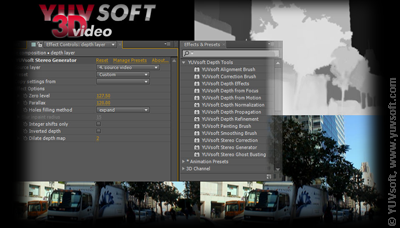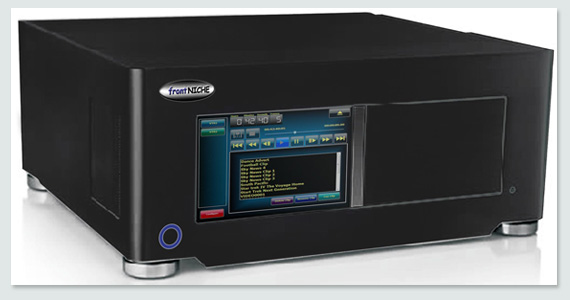The EDCF annual review of progress in D-Cinema will be on the last day of IBC, Tuesday September 13th at 10:00 in Room E102 of the RAI Conference Centre.
There will be 13 speakers covering a wide range of topics including:-
- Dave Monk – the tipping point for D-Cinema
- Peter Wilson – recommendations for screening Alternative Content
- Siegfried Foessel – the Prime 3D project
- Reiner Doetzkies – an update from TI
- John Hurst – DCI testing & 21DC activity
- David Hancock – current status of worldwide deployment
- CJ Flynn – ISDCF activity
- Kommer Kleijn – screening quality concerns amongst cinematographers
- Tim Sinnaeve – 4k from Barco
- Benoit Michel – XDC & delivery of Alternative Content
- Francois Helt – Screen Measurement
- Nigel Dennis – latest developments from Qube
- Laurence Claydon – current issues in post-production
Entry to this session is free but you will need to be registered to enter the RAI
Also please note that the EDCF/SMPTE Post-Production Workshop at 16:00 on Sunday 11th is also a free entry session.
Win an iPad: Cabletime to hold iPad prize draw Stand:13.373
Here’s some friends or things that I want to see (none of which have offered me an iPad):
The new GefenPRO 3GSDI to 3GSDI Scaler, 3GSDI Fiber Optics Extender and 16x 3GSDI Rack Tray all make their first appearance at IBC. A plug and play methodology with support for high definition resolutions up to 1080p full HD makes each solution ideal for professionals who want support for the most current formats and a true high definition performance.
GefenPRO 3GSDI to 3GSDI Scaler
This new scaler will automatically adjust incoming video to the maximum resolution supported on the connected display using all SDI formats including SD, HD and 3G SDI. This is important when multiple displays do not support the same native resolution in a system. If two displays are connected with 3GSDI capability, and a third is connected with HDSDI capability, the GefenPRO 3GSDI to 3GSDI Scaler will allow the HDSDI display to show video in its native resolution, while the other displays show 1080p full HD in the 3GSDI format. This scaler can also be manually scaled to all SDI formats up to 1080p full HD.
GefenPRO 3GSDI Fiber Optic Extender Short Range
This short-range extender offers another option for integrators that need to extend 3G SDI up to 100 meters (330 feet). It uses uses small, dongle-type sender and receiver units to extend a source using 3GSDI to its display over one single-mode fiber optic cable terminated in ST connectors.
GefenPRO 16X 3GSDI Rack Tray
This companion product to the GefenPRO 16×16 3GSDI Matrix works in concert with Gefen’s 3GSDI Fiber Optic Extenders to centralize all audio/video equipment. It is a flexible accessory that can hold up to 16 3GSDI Fiber Optic Extender sender units in a single rack space, giving installers an easy way to access all audio/video equipment in the rack. The modular tray can be scaled to fit any combination of Gefen’s fiber optics extenders, up to a total of 16, using removable mounting brackets. Comprised of die-cast metal, this rack tray offers an open top design for easy access to insert or remove individual sender units. Cable brackets on the rear of the tray streamline cables out the back in an orderly fashion. Dual power supplies strengthen performance.
Qube is really pushing their new faster, more of everything, cheaper DCP creation platform for digital cinema. Booth 7.F45
This should be of great interest to everyone. QubeMaster Xpress 2 is a Windows platform tool.
Nick Dagger has a piece up about QubeMaster Xport on a Mac working with Compressor 4
 011
011
YUV Soft 3D Video 11.F74
Just because they kind of look interesting and they are stuck in the hinterlands.
See Big Pic at IBC – Booth 7.K01
Big Pic Media is bringing a full lineup of production and postproduction technologies to IBC. This year, the UK-based systems integrator will be presenting Cintel, YoYotta, MARVIN and Pandora.
“The exciting thing for Big Pic at this year’s IBC is the fact that the worlds of production and postproduction are actually merging,” said Adam Welsh, director of Big Pic Media. “It’s interesting to present products that cross those boundaries.”
1. CINTEL
Cintel will be at booth 7.B35 showing the new user interfaces for the ImageMill 2 GRACE, STEADY and ORIGIN. FLOW provides a full timeline user interface enabling GRACE, STEADY and ORIGIN to be adjusted on a scene-by-scene basis. The price for FLOW will be £995.
COLOURFLOW adds zoom pan and rotate effects PLUS additional real time data primary colour correction. The price for COLOURFLOW is £3,995.
Cintel will also announce new upgrades to diTTo evolution at IBC, including a capstan drive and a true 4K camera.
In addition to this, Cintel is using IBC to announce three new Film2Film Image Restoration packages. These all feature diTTo evolution, imageMill2 and the CCG DEFINITY Film Recorder (which will be on the stand at IBC).
2. MARVIN
MARVIN Technologies will introduce its new MARVIN 2.0 on-set camera data management system in Hall 7 booth 7.K01e. Along with support for all common digital cinema cameras, including RED, ARRI Alexa, Silicon Imaging SI 2K, and others, IBC attendees will get a sneak peek at MARVIN’s new stereoscopic 3D support.
MARVIN automates the creation of backups, LTO tape masters, QuickTime proxies for offline editing and DVD dailies as well as shot logging. Now, with MARVIN 2.0, filmmakers have a choice of three models, ensuring data safety and efficient transcoding for any size of project.
The new stereo 3D support in MARVIN 2.0 allows the system to ingest left- and right-eye images simultaneously, archiving to two LTO tapes – one for each eye. MARVIN 2.0 will render stereoscopic content to side-by-side, interleaved or checkerboard QuickTimes for Final Cut Pro or MXF files for fast import into Avid systems.
3. Pandora
Widely recognized for its industry-leading line of colour grading systems, Pandora International will be introducing a new product at IBC 2011 at booth 7.K01b. PLUTO is a new image processing system that is designed to run various applications for postproduction and production workflows.
PLUTO hardware allows for HDSDi 4:2:2, 4:4:4 dual link and 3G I/O with options for HDMi and display port to follow.
PLUTO currently has three optional applications that can run standalone or simultaneously, Display Colour Management, Cursor and Blanking Generator and 3D Stereoscopic processing.
PLUTO supports the main colour management software solution for the profiling of displays and applying the calibration and creative LUT’s created.
Pandora will also be presenting the highly acclaimed REVOLUTION real-time file-based colour correction system, the PILOT machine controller and the Spirit Classic update to real-time 2k scanning PSi.
4. YoYotta
YoYotta will be showing the latest version of the YoYo postproduction workflow system at IBC 2011. Already deployed around the world at major postproduction facilities, the new YoDailies application now has multiple seats in use at a major LA-based studio for file-based digital dailies workflows. The YoYo suite of products can this year be seen in two locations.
You can also see YoYotta at the Tangent stand (7.B16) where YoYo will be running as a portable setup known as YoMobile. The latest Apple MacBook Pro, Mac Mini or iMac models include Thunderbolt, which is a fast data connection running over a single cable.
YoYo can use Thunderbolt to connect to RAID and HD monitoring which makes YoDailies even more portable for on set use.
At IBC YoYo will be using the latest Tangent element panels which are very compact and modular. YoYo continues to support the Tangent Wave panel.
At the Sony stand (12.A10) Big Pic will be showing the development of new YoYo workflows for the F65 camera and SRMASTER format.
Qube is really pushing their new faster, more of everything, cheaper DCP creation platform for digital cinema. Booth 7.F45
This should be of great interest to everyone. QubeMaster Xpress 2 is a Windows platform tool.
|
|||
|
| The manufacturer of compact, cost-effective equipment for live production and post-production will demonstrate Video Ghost, its award-winning phantom power modules developed as a low-cost, reliable alternative to traditional batteries. BHV will also exhibit its full range of rack-mount and portable hybrid digital/analogue switchers, rate/standards and up/cross conversion products. | |
| The designer and manufacturer of VTR and video server remote control panels is demonstrating its newly launched andaward-winning AVITA live production control system at IBC 2011. AVITA is a unique hybrid control system designed to easily and quickly capture, edit and play out media from multiple sources. The system uses the very latest touch screen technology and modular hardware panels to allow multiple users access to multiple server ports over a network. | |
 Stand 8.A94 Stand 8.A94 |
The manufacturer of award-winning 3G/HD/SD conversion gear will conduct technology demonstrations of loudness processing over IP, debut its 9257 1×9 MADI card-based audio distribution amplifier, introduce +LM virtual loudness metering options, and present a new MPEG-4 signal delivery source. The Company also plans to highlight solutions and enhancements to their Fusion3G® and COMPASS® series of multi-functional, multi-featured cards. |
 Stand # 8.B96 Stand # 8.B96 |
The oldest antenna company in the USA will turn the spotlight on its broadband products, including its JAT-U UHF broadband super turnstile antenna, JUHD UHF broadband panel antenna, Prostar JA/MS-BB broadband UHF slot antenna, and the new RCEC .2 meter (8”) affordable mask filter. Jampro will also showcase its RCCC constant impedance combiner along with economical and flexible antennas, combiners & filters, towers, and RF components for every application in the broadcast industry including DTV, DVB-T, FM and HD Radio solutions. |
| A well-established leader in manual and robotic camera support and virtual reality tracking, Shotoku’s manual highlights will include a new 2-stage pneumatic pedestal and perfect counter-balance pan & tilt head. On the robotic side, enhancements that further ease-of-use and please the most budget conscious will be demonstrated. |
Gefen 7.B30
Frontniche 10.F32


 Blue George Features:
Blue George Features: 